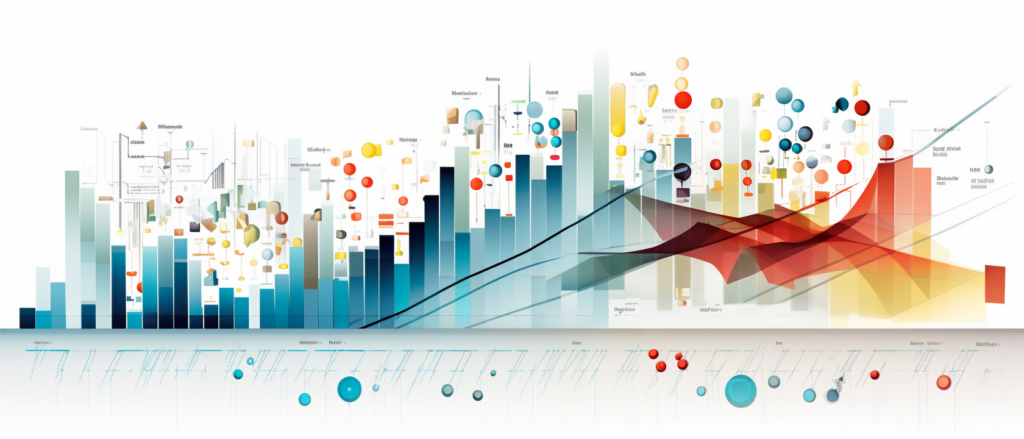Key Takeaways
✅ Return on Investment is a fundamental measure of advertising efficiency that enables businesses to evaluate the profitability of their ad spend, ensuring financial prudence in marketing strategies.
✅ Accurate calculation of ROI entails detailed recording of costs, meticulous measurement of advertising outcomes, and comprehension of the variable factors that can influence ROI.
✅ Continuous optimization techniques, such as A/B testing and audience targeting, alongside use of analytics tools, are cruci1al for enhancing ROI, staying ahead in competitive markets, and maximizing business growth.
Introduction
Attention business owners and marketers! Are you pouring funds into advertising but feel like you're shooting in the dark when it comes to your campaign's success? Imagine knowing precisely how every dollar you invest affects your bottom line. That's the power of understanding Return on Investment (ROI) on ad spend—a vital compass in the quest for profitability.
In this crystal clear guide, we'll demystify ROI, offering you the essential knowledge to expertly measure and maximize the effectiveness of your advertising dollars. Delve into the nuts and bolts of advertising costs, discover how to accurately gauge your campaigns' outcomes, and learn the trusted formula to calculate your true ROI.
Whether you're looking to benchmark your success or refine your strategy for peak performance, this article is your roadmap to smarter, data-driven advertising decisions that can significantly bolster your financial wins. Join us as we unveil the tools, strategies, and real-world insights to optimize your ad spend and secure a robust ROI that will elevate your business to new heights of success!
The Importance of ROI
Understanding the Significance of ROI in Advertising Decision-Making
ROI, or Return on Investment, is a critical metric in evaluating the effectiveness of advertising campaigns. It helps businesses understand whether the money they are investing in advertising is generating a sufficient return. For example, a 2020 report by Statistica highlighted that social media ad spend yielded an average ROI of 23% across industries such as e-commerce, retail, and finance.
The Potential Impact of Analyzing ROI on Advertising Spend
The ability to analyze ROI empowers businesses to make data-driven decisions about their advertising strategies. This analysis becomes especially pertinent considering that businesses may spend an average of $4.83 per click on social media ads. In the realm of search engine marketing, the stakes are similarly high, with Wordstream reporting a 200% average ROI for Google Ads in 2019.
Calculating Advertising Costs
Breaking Down the Various Expenses Associated with Running Ads
Calculating advertising costs involves accounting for all expenses, including ad placement fees, design, creative production, and management fees. These costs must be considered when assessing the overall investment in advertising.
Including Costs Such as Ad Placement, Design, and Management Fees
To grasp the full picture of ad spend, one must account for the costs of placing ads on various platforms, professional fees for designing these ads, and the management overhead for overseeing advertising campaigns.
Measuring Advertising Results
Defining Measurable Outcomes of Advertising
The results of advertising are measurable through indicators such as increased website traffic, lead generation, conversion rates, and actual sales achieved.
The Role of Data Collection and Tracking in Measuring Results
Collecting and tracking data is essential for measuring advertising effectiveness. Tools and platforms that provide analytics enable a business to understand how each ad dollar translates into business outcomes.
Calculating ROI
Formula for Calculating ROI on Ads Spend
The basic formula for calculating ROI is (Return - Investment) / Investment. The 'return' is the revenue generated from the advertising campaign, and the 'investment' is the total cost incurred for the advertising.
Breaking Down the Formula Components: Investment, Return, and Profit
- Investment refers to the total ad spend.
- Return is the total revenue generated from the ad campaign.
- Profit is the return minus the investment.
Understanding Net Revenue and Revenue Growth
Net revenue is the income from sales minus the cost of goods sold, operating expenses, taxes, and interest. Revenue growth is the measure of the increase in a company's sales from one period to the next.
Benchmarking ROI
Understanding Industry Benchmarks for Advertising ROI
Industry benchmarks provide a comparative basis to gauge the performance of advertising campaigns against similar businesses or industry averages.
The Importance of Comparing Your ROI with Industry Standards
Comparing a company's ROI with industry standards helps to identify areas of strength and opportunities for improvement within the advertising strategy.
Optimizing Advertising ROI
Strategies for Improving the ROI on Advertising Spend
Improving ROI can involve optimizing ad spend, refining target audiences, reallocating budgets, and improving ad creatives through tactics like A/B testing.
Case Studies and Real-World Examples
Providing Examples of Businesses That Have Successfully Improved Their ROI on Advertising Spend
Real-world examples can offer insights and best practices that other businesses can adapt and implement in their advertising strategies.
Tools and Resources for Calculating ROI
Overview of Tools and Resources Available
There are numerous tools and resources available to businesses, such as Google Analytics, Facebook Ads Manager, and other advertising analytics platforms that assist in calculating and optimizing advertising ROI.
Explanation of Data Analytics Software and Platforms
These software solutions and platforms facilitate the collection, measurement, and analysis of advertising data, enabling businesses to calculate ROI more efficiently.
Importance of Calculating ROI on Advertising Spend
In summary, understanding and calculating the ROI on advertising spend is essential for evaluating the effectiveness of ad campaigns and making informed budgetary decisions.
Implications of the Findings on Advertising Strategies
The insights derived from ROI analysis should inform future advertising strategies, ensuring that businesses continue to invest their marketing dollars wisely for maximum impact.
AI Marketing Engineers Recommendation
Understanding ROI on Ad Spend
Return on Investment (ROI) is a crucial metric for evaluating the effectiveness of advertising campaigns. To calculate ROI on ad spend, you need to consider the total revenue generated as a direct result of the ad campaign and compare it against the total cost of the campaign. The formula is:
ROI = {(Revenue - Ad Spend)/(Ad Spend)} times 100
Calculating Accurate ROI
Step 1: Track Conversions
Make sure to use accurate tracking methods to measure conversions that can be attributed to the ad campaign. Tools such as Google Analytics, Facebook Pixel, or any other conversion tracking software can be instrumental for this purpose.
Step 2: Attribute Revenue
Determine the revenue generated from each conversion. In some cases, this could require a customer lifetime value analysis if the campaign is expected to generate repeat purchases over time.
Step 3: Consider Total Ad Spend
Include all costs associated with the campaign — not just the direct ad buys but also creative costs, agency fees, and the overhead associated with campaign management.
Step 4: Use a Test and Control Approach
To truly understand the impact of your advertising, consider using a control group that is not exposed to the ads. The difference in behavior between the test and control groups can then be attributed to the ad campaign.
Step 5: Analyze and Iterate
ROI is not a static number. Analyze the results period over period and use insights to constantly optimize your campaigns for better performance.
Making Data-Driven Recommendations
- Audience Insights:
Harness the power of analytics to understand who is responding to your ads. Tailor future campaigns based on demographic, psychographic, and behavioral data.
- Creative Performance:
Test different ad creatives and formats to see which resonates most with your audience, using A/B testing tools to quantify their impact on ROI.
- Channel Optimization:
Assess the performance of various ad channels and platforms to allocate budget more effectively, focusing on those that provide the best return.
- Seasonality and Timing:
Adjust your ad spend based on seasonality, sales cycles, and customer purchase behaviors to maximize ROI.
- Lifecycle Marketing:
Map out the customer journey and identify key touchpoints. Invest in ads that nurture leads at each stage of the funnel.
- Holistic View:
Look beyond immediate ROI. Consider brand awareness and customer loyalty as long-term benefits of ad spending.
Long-Term Perspective
While immediate ROI is important, also consider the long-term value that advertising brings to brand building. Some ads may serve the purpose of engaging users at the top of the funnel, which might not result in immediate conversions but is crucial for brand recall and customer acquisition over time.
Regularly monitor your campaigns and continue to refine your approach based on the data-driven insights you gather. Keep in mind that a positive ROI means your ad spend is working in favor of your business growth; however, always seek to optimize ROI through continuous experimentation and data analysis.
Remember, the best ROI is one that aligns with your overall business objectives and growth strategy. By staying closely attuned to your performance metrics and market trends, you can make informed decisions that contribute to sustainable success.
Conclusion
The Return on Investment (ROI) on ad spend is an essential metric for comprehending the efficiency and profitability of advertising campaigns. With the importance of ROI deeply rooted in advertising strategy, it is evident that conscious effort in analyzing advertising spend can lead to significant improvements in financial performance. By rigorously calculating advertising costs and measuring the resultant outcomes—such as increased website traffic, lead generation, and ultimately sales—organizations can gain clear insights into the effectiveness of their marketing endeavors.
The article dissected the process involved in calculating ROI, emphasizing the intrinsic components such as investment, return, and the calculation of profit. Furthermore, we explored the myriad of factors that can influence ROI, like ad placement and audience targeting, and highlighted the necessity of benchmarking against industry standards to gauge campaign success effectively.
Finally, the exemplification of real-world successes through case studies demonstrates the tangible impact that diligent ROI calculation can have on businesses by aiding them in making data-driven decisions that foster growth and profitability. The discussion on the assortment of tools and resources for calculating and optimizing advertising ROI underscores the technological advancements available to marketers in pursuit of efficiency and competitive advantage.
FAQs
ROI stands for Return on Investment. It is a measure of the profitability or value gained from a particular investment relative to the cost of that investment.
The standard formula for calculating ROI is:
ROI (%) = ((Recovery of investment + Profit - TVC) / TVC) x 100
where Recovery of investment is the amount invested, Profit is the net profit generated from the investment, and TVC represents the Total Variable Costs.
To calculate ROI on ad spend, you would use the following formula:
ROI (%) = ((Gross Profit from Ad - Cost of Ad) / Cost of Ad) x 100
There is no specific "good" ROI on advertising spend as it varies by industry and campaign. However, a good ROI is one that exceeds the cost of the investment and meets or surpasses the expected level of return set by the company.
To improve your ROI on ad spend, consider the following strategies:
- Determine your target audience precisely and ensure your advertising is effectively reaching them.
- Choose ad platforms that are most suited for your audience and goals.
- Craft compelling ad content that resonates with your target market.
- Set clear and achievable expectations for ad performance.
- Conduct A/B testing to measure the effectiveness of different ad variations.
- Regularly analyze campaign results to optimize ad spend and focus on high-performing tactics.














